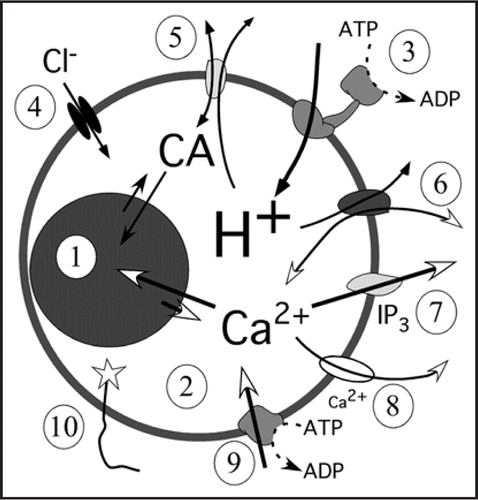Figures & data
Figure 1 Mechanism used for Ca2+ (and catecholamines, CA) turnover in chromaffin secretory organelles. The relative sizes for the granule matrix (1) and the free compartment (2) have been change for clarity. The H+ are pumped towards the vesicle lumen by an ATP dependent (V-ATPase, 3). Protons maintain the pH and the potential gradients with the help of Cl− channels which acts as counter ions (4) to keep the Ψ ≈ −80 mV. Catecholamines (5) and Ca2+ (6) use H+ as antiporters to be accumulated inside vesicles, both carriers can work also in the reverse mode. The IP3 receptors (7) release Ca2+ as a response to intracellular IP3 whereas CICR (8) amplifies the Ca2+ signaling by releasing Ca2+ a response that is modulated by ryanodine and caffeine. The SERCA (9), not described yet in chromaffin granules will be the Ca2+ pump; this pump is blocked by thapsigargin. In these studies the luminal terminal of VAMP (10) (synaptobrevin) has been modified to place a Ca2+ sensor (low Ca2+-affinity aequorine) or pH sensor (EGFP).
